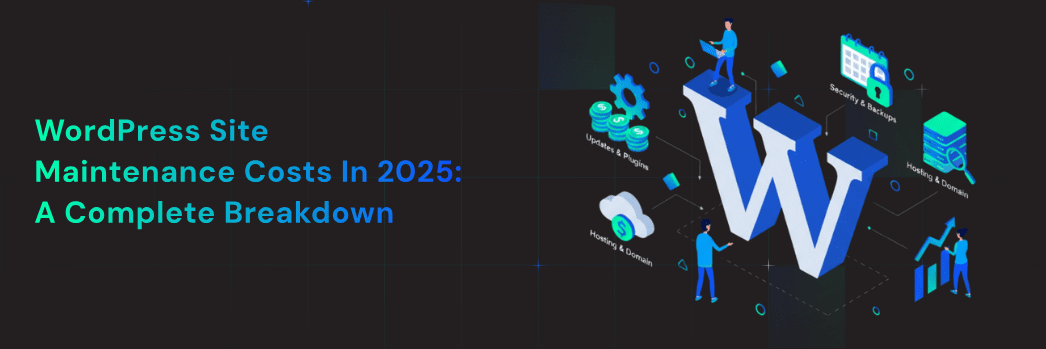The eCommerce industry is booming like never before. From small startups to large enterprises, businesses across the globe are shifting their focus toward online stores to reach customers, boost sales, and stay competitive. However, before building an eCommerce store, one of the most important decisions is choosing the right platform. Among the many available options, Shopify and WooCommerce are two of the most popular.
Both platforms are powerful, but they cater to different business needs and approaches. So, which one should you choose? In this blog, we’ll compare Shopify and WooCommerce across various aspects to help you decide which is better for your eCommerce success.
Shopify
Shopify is a hosted eCommerce platform that provides everything you need to set up and manage an online store. It’s a Software-as-a-Service (SaaS) solution, which means you pay a monthly fee, and Shopify handles hosting, security, updates, and maintenance. Shopify is designed for simplicity—anyone without coding knowledge can create a store using its drag-and-drop interface.
WooCommerce
WooCommerce, on the other hand, is a WordPress plugin that turns a WordPress site into a fully functional online store. Unlike Shopify, WooCommerce is open-source, giving you complete control over customization, features, and design. However, it requires separate hosting, domain registration, and security setup.
- Shopify:
Shopify is known for its simplicity. You don’t need technical skills to get started. From product uploads to payment gateway integration, everything is streamlined. The intuitive dashboard makes managing orders, customers, and analytics effortless. - WooCommerce:
WooCommerce offers flexibility but comes with a steeper learning curve. Since it’s built on WordPress, you need to manage hosting, SSL certificates, and updates. While it gives developers full control, beginners may find it overwhelming.
Shopify (for beginners and businesses seeking simplicity)
- Shopify:
Shopify offers a variety of themes, both free and paid. These are mobile-responsive and easy to customize using their built-in editor. However, deep customization may require knowledge of Shopify’s coding language, Liquid. - WooCommerce:
As an open-source platform, WooCommerce offers unlimited customization. You can choose from thousands of WordPress themes and plugins or even create a completely custom design. Developers can tweak everything from checkout flows to product pages.
WooCommerce (for full creative control and flexibility)
- Shopify:
Shopify charges a monthly subscription fee, starting from $29/month, with higher-tier plans for advanced features. In addition, there are transaction fees unless you use Shopify Payments. Apps and premium themes may also add to the cost. - WooCommerce:
WooCommerce itself is free, but costs arise from hosting, domain registration, SSL certificates, and premium plugins. While you can start on a low budget, expenses can increase as you scale.
WooCommerce (more cost-effective for startups if managed well)
- Shopify is feature-rich out of the box. It offers built-in tools for inventory management, abandoned cart recovery, multi-channel selling, SEO, and analytics. Its app store provides thousands of integrations.
- WooCommerce:
WooCommerce has endless possibilities with plugins. From payment gateways to advanced marketing tools, you can add almost any functionality. However, too many plugins can affect speed and maintenance.
Shopify is better for built-in features, while WooCommerce excels in flexibility.
- Shopify:
Shopify supports over 100 payment gateways, including PayPal, Stripe, and its own Shopify Payments. However, if you don’t use Shopify Payments, you pay extra transaction fees. - WooCommerce:
WooCommerce supports nearly all major payment gateways, including PayPal, Stripe, Square, and region-specific providers. Since it’s open-source, you won’t be locked into transaction fees.
WooCommerce (more flexible and cost-effective)
- Shopify:
Shopify handles all security, updates, and PCI compliance, making it hassle-free for store owners. You don’t need to worry about technical aspects. - WooCommerce:
With WooCommerce, the responsibility for security and maintenance falls on you or your developer. You need to ensure SSL certificates, firewalls, backups, and updates are in place.
Shopify (ideal for businesses that don’t want to manage security themselves)
- Shopify:
Shopify is highly scalable, making it suitable for both small businesses and enterprises. With Shopify Plus, large brands can manage high-volume sales with ease. - WooCommerce:
WooCommerce can also scale, but it depends on your hosting provider and technical setup. For very large stores, you’ll need powerful hosting and expert developers.
Shopify (for seamless scalability)
- Shopify:
Shopify offers strong SEO features like customizable title tags, meta descriptions, and clean URLs. It also integrates easily with social media, Google Shopping, and marketing apps. - WooCommerce:
WooCommerce, being built on WordPress, has a massive advantage in SEO. With plugins like Yoast SEO, you get advanced optimization tools and complete control over content marketing strategies.
WooCommerce (best for SEO-focused businesses)

So, Shopify vs. WooCommerce—which one is the better platform for eCommerce success?
- If you want a simple, hassle-free, and scalable solution, Shopify is your best bet. It’s perfect for entrepreneurs and businesses that prefer convenience over technical complexity.
- If you value complete control, customization, and flexibility, WooCommerce is ideal. It’s great for businesses with technical expertise or access to developers who can manage customization and hosting.
Ultimately, the choice depends on your business goals, budget, and technical expertise. Both platforms are excellent, but the “better” one for you will depend on whether you prioritize simplicity (Shopify) or flexibility (WooCommerce).
The eCommerce landscape is more competitive than ever, and choosing the right platform can make or break your online success. Shopify shines with its simplicity, scalability, and built-in features, while WooCommerce leads with customization, flexibility, and SEO advantages.
Before making your decision, evaluate your business needs, budget, and growth plans. Whether you choose Shopify or WooCommerce, the key to success lies in creating a user-friendly store, offering quality products, and delivering exceptional customer experiences.
Search
Recent Post
- WordPress Site Maintenance Costs in 2025: A Complete Breakdown
- Strategies for Managing a Software Development Project
- What Are the 7 Phases of Mobile Application Development Life Cycle?
- Advantages of Swift Language: Why Should You Build an iOS App with Swift?
- Node.js vs. React.js: Which JavaScript Technology Should Developers Choose?
- UI/UX Design Services – Expert Solutions for Web & Mobile Apps
Categories
- Blog (43)
- Mobile App (7)
- option1 (1)
- option2 (1)
- WordPress (2)




